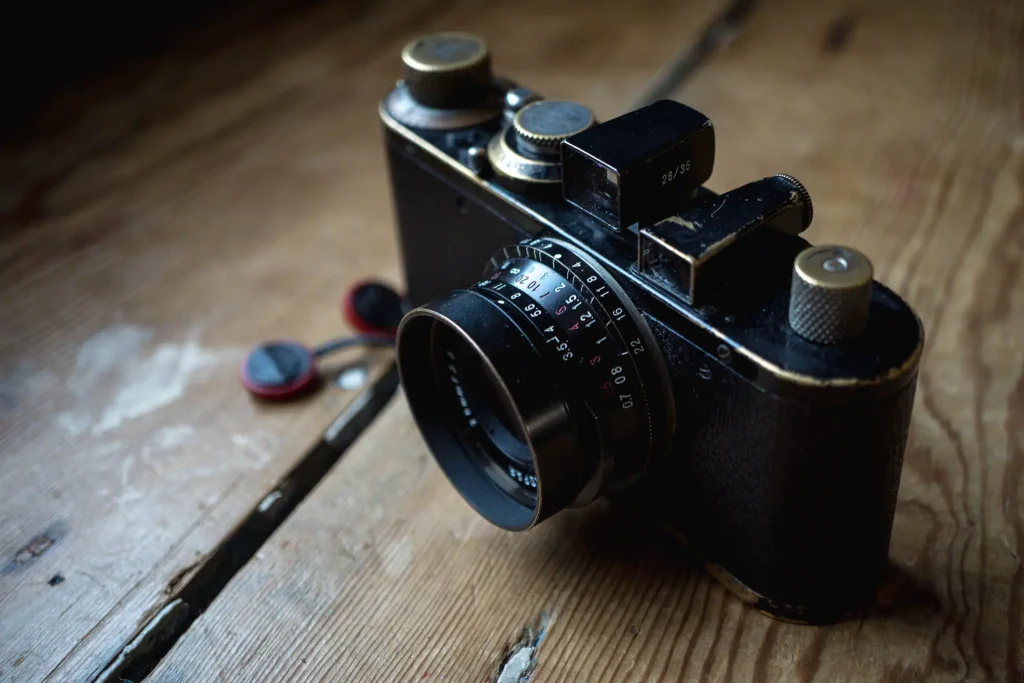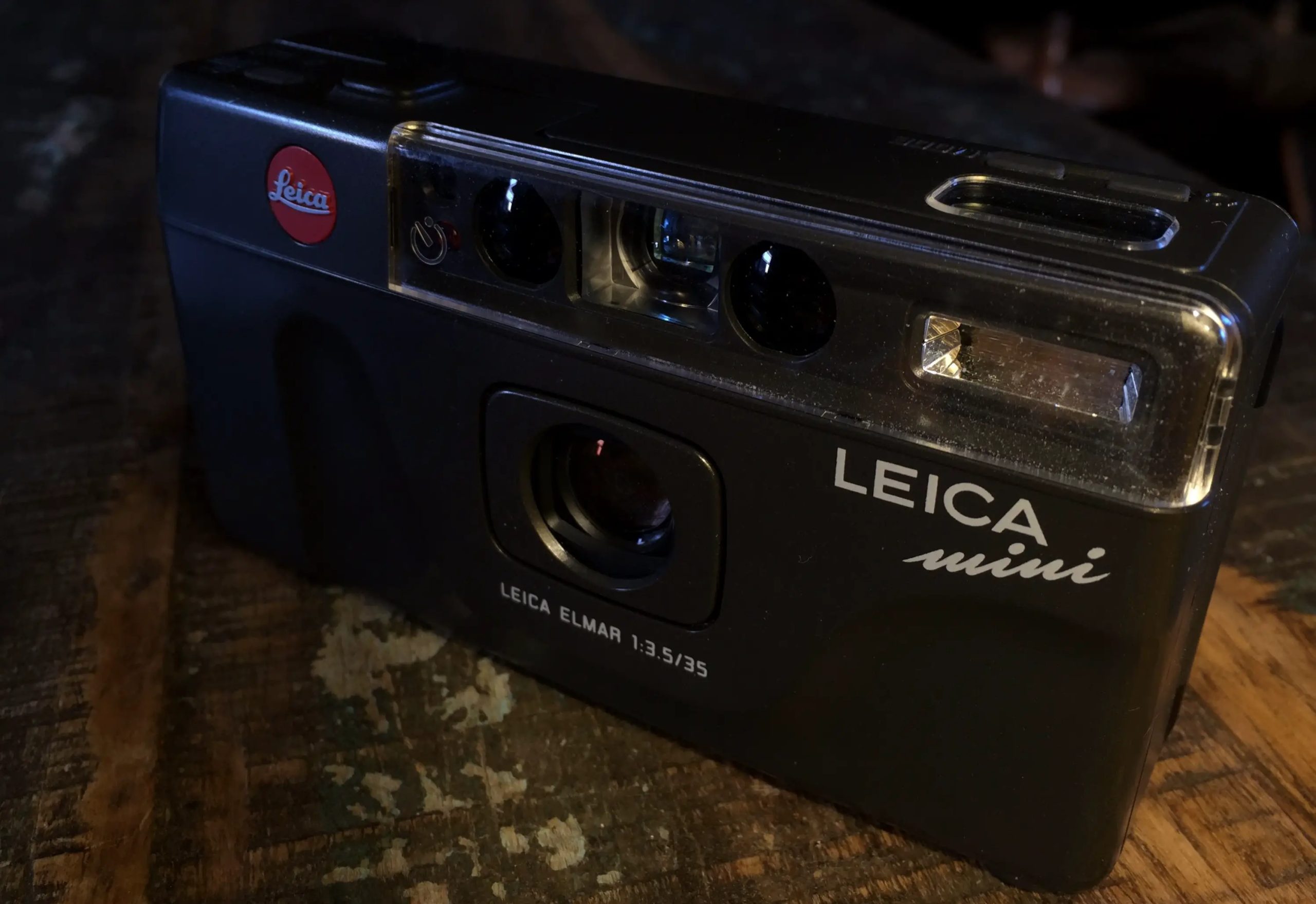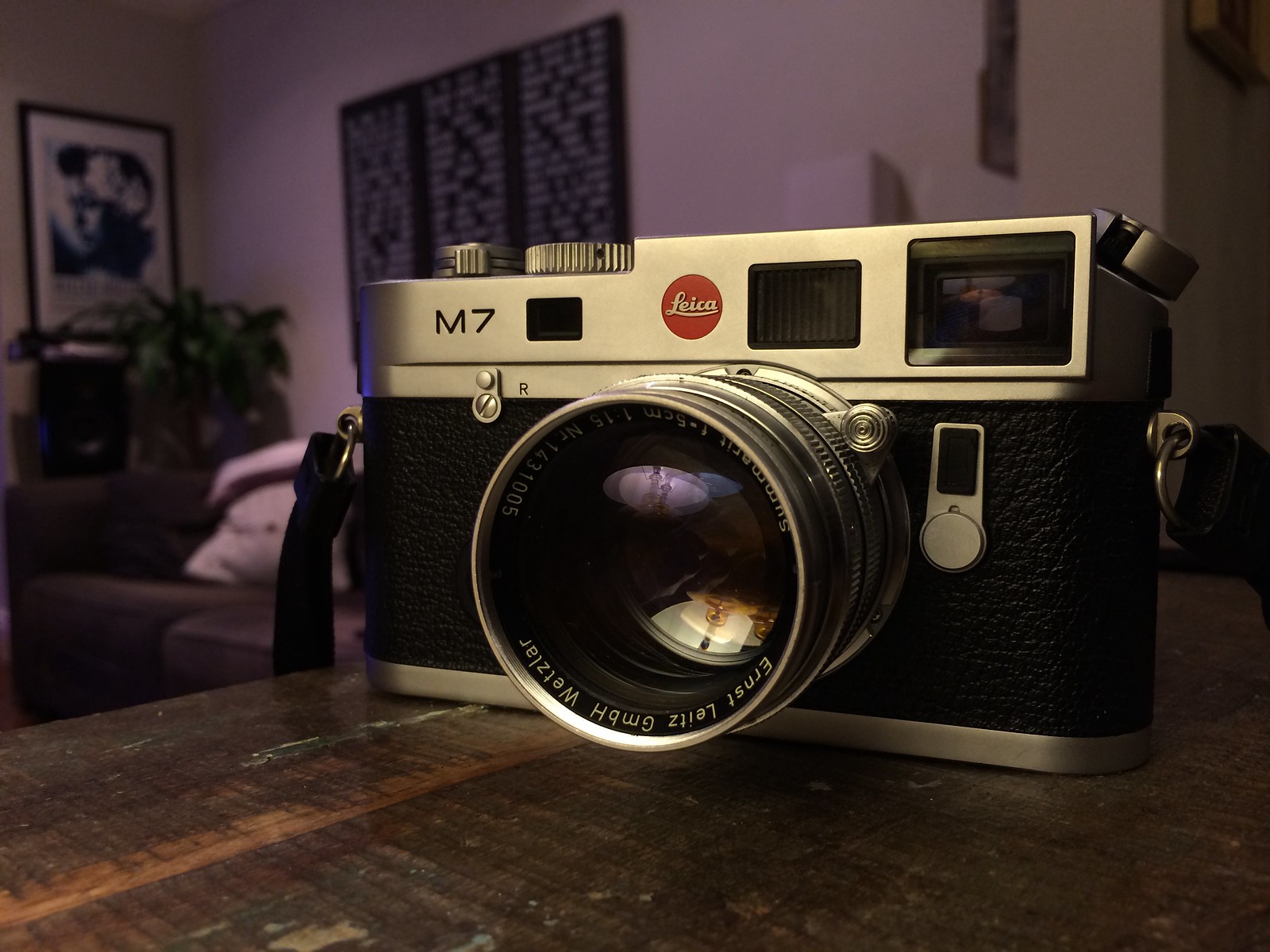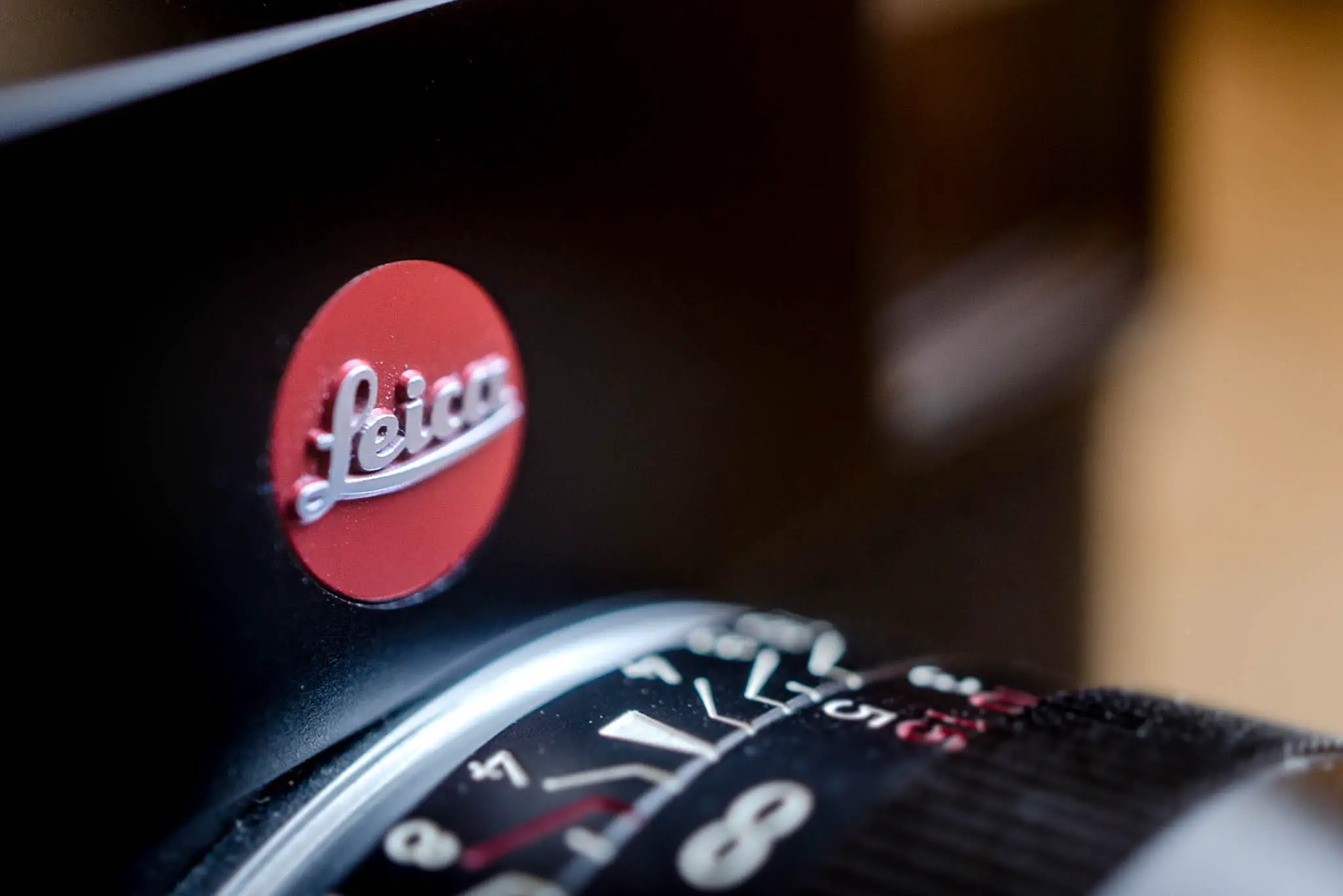Leica cameras, especially the m-mount rangefinders have a certain amount of mystique attached to them. Their fans often seem to give them a level of attention and admiration as camera designs that over-inflate their desirability given the fact that they are arguably niche products in the landscape of possible photographic equipment. What this mystique hides is many of the realities of owning, maintaining and shooting these cameras – this being something that their often vocal detractors expend a lot of breath trying to highlight.
This post is going to be the first in a short series about Leica cameras. Not – as you will discover – because I want to wax lyrical about how incredible they are, but actually as part of a desire to attempt to dispel some of the myths and aforementioned mystique. Yes this all comes from a fairly fanatical Leica camera user, but as I hope you will discover I’m not blind to the ugliness of elements of the Leica brand, and I certainly don’t think the cameras are perfect!
A bit of history
Possibly the most logical place to start is at the beginning. I shan’t bore you with a comprehensive blow by blow account of Leica’s history – not least because it doesn’t interest me enough to write about it. That said, I do think it’s worth acknowledging where it all started, mainly because Leica played a big part in the popularisation of the 35mm film format for stills photography – a fact that can’t have done their long-term reputation much harm!
Oskar Barnack, working for a manufacturer of microscopes by the name of Leitz, created some of the earliest stills cameras to make use of a perforated 35mm film that at the time was mostly used for moving pictures. By expanding the vertical 18×24 frame used for moving pictures to a horizontal 24×36 frame for stills he created a greater potential for good quality enlargements. By combining this potential with quality Leitz optics, Leitz Camera was born.

The likes of Contax and Kodak soon followed, and with Kodak bringing the 135 cartridge to market the path was set for 35mm film to eventually become the most popular film used throughout the 20th century and still today. Of course with that popularity came many more brands making 35mm compact cameras, especially after the Second World War. But from those very early days Leica built a strong reputation for making high quality tools that were aimed at professionals and serious photographers; a reputation that whilst questioned has become the backbone of the niche, high-end and luxury brand they are today.
The Leica M – the choice of the greats (and the aspirational)
The early reputation that Leica had saw their cameras being adopted by many notable photographers in the early days of photojournalism and what we’d now broadly call street photography. The portability and reliability made them a great choice for such usage. What’s relevant about this today is that it’s these two fields of photography that are arguably the most aspired to by photographers looking to make a name for themselves outside of the more day-to-day fields commercial photography. I’d even go as far to say that these are the types of photography that command the most credibility and dare I say “cool”.
The knock-on effect of this is that the credibility associated with these fields of photography and those at the top of their game within them has over the last 90 odd years rubbed off on Leica cameras, especially I’d argue, the m-mount ones that take film. All those great film photographers who took all these great photos with Leica cameras throughout history did wonders for the reputation of the Leica brand. These days it almost seems imprinted into the history of photography that Leica cameras played a part in the creation of countless historically significant photographs – to the point in fact that some very famous photos are often incorrectly attributed as being shot with Leica cameras. This seems to have created some quite significant level of aspiration in budding photographers to own the things – great photos were taken with these great cameras, ergo, to take great photos one must own a Leica…
Now of course anyone with half a brain will pull that apart and tell you that great photography is achievable with any appropriate equipment. No one needs a Leica to be a great photojournalist or street photographer – many more great photographers over the decades have used other brands, and have of course still achieved greatness. But with Leica, at least within certain circles, there just seems to be an extra credibility attached to the use of the gear, credibility that seems to be continually reinforced by further uptake of these types of cameras by photographers who fit (or at least attempt to fit) into these more “cool” fields of photography, even today. I don’t really buy into the “cool” myself – though I’m sure most others would say that too. But, one way or another, to a great or lesser degree, I’d bet many are influenced on some level by this strength of this element of the Leica brand image. This in turn continues to reinforce the notion of some sort of mystique being attached to these cameras.

The positive derision of luxury
Of course, not everyone buys into this mystique in a positive way. Some people even use it as the basis of their distaste toward the brand. The irony is, those who deride the brand unfortunately but quite likely help to maintain its place on the pedestal. It’s an almost perfect example of the phrase “no publicity is bad publicity”. Many of those who go out of their way to discuss how Leica cameras are “just cameras and aren’t worth the money” etc, often do little more than to draw attention to the fact that opposite opinions exists.
These sorts of negative opinions toward luxury and high end brands exists across the board. The ugly side of the existence of luxury brands is that they no doubt thrive on this derision and even likely adopt it as part of their brand management strategy. Let me put it this way, Leica wouldn’t release rebranded Panasonic cameras at twice the price if they thought it was going to be PR suicide! They do it because they know they’ll sell the things to people with a few quid in their back pockets which in turn will add weight to the brand, and not detract from it.
This is just what Hasselblad tried to do with the Lunar et al – unfortunately the then owners misjudged the perception of the brand and it backfired. Yet whilst it was happening, Leica continued to sell rebranded Panasonic cameras unphased and unharmed by the controversy. Leica have such a strong brand that it overpowers the thin veil of vaguely specified technical differences and validates the doubled price tag. People who can afford it buy into it do so because of the shear weight of the brand. Their cash allows them both the luxury of a camera that only might be better, as well as buying them the luxury of basking in the glory of owning such a thing. The even more ugly part of this is that quite often it comes with the idea that those who can’t afford such things are simply jealous.
Of course these extremes are far from the reality for everyone who can afford a Leica, nor is jealousy a reality for everyone who can’t – not by a long stretch. Not all Leica cameras are rebranded Panasonics for a start, and equally many people simply don’t see Leica’s own cameras as being the right choice for them… But the fact that this divide exists in broad landscape of opinion and emotion toward Leica, once again adds to the mystique.

The Leica fanfare
The result of everything written above is that I think people often buy Leica cameras, or at least their first Leica, with a level of expectation. Of course expectation varies from one person to the next but the impact of it can be quite significant when it comes to the initial desire to purchase a Leica camera, and indeed the long term outcome of that purchase decision. The expectation ranges from simply looking to find and use a quality tool at one end of the spectrum, to the use of a Leica having some profound impact on the photographic outcome, and perhaps even expecting some sort fanfare.
I’ve taken this word “fanfare” directly from a post on Casual Photophile. Josh, the author of this post, speaks quite eloquently about just the sort of expectation I am talking about. All the hype had clearly permeated his psyche, yet when he used the Leica M2 in question and felt so little for it he was compelled to write about a lack of “fanfare”. The Leica-experienced pragmatist in me wants to pull apart this part of his response and label it as almost naive. It’s just a camera after all, what was he expecting?
But then, I remember the day I got my first Leica – a battered M4-2 around a decade ago. I’d already established a joy for the rangefinder camera with a voigtlander R2a, so when I got my Leica I was instantly hit by the difference. Short of the lack of light meter, everything I loved about the Voigtalnder was present in the Leica, but with it came a mechanical feel that the Voigtlander entirely lacked. The camera appeared to work as well as the day it had left the factory, yet was 40 odd years old. It was more solid than the majority of the cameras in my then fairly extensive Nikon collection, and with this solid feel came a quietness that suggested an internal construction that was superior to any of my Nikon cameras, including my F2 (something I know know to be untrue). Combined with this, I was proud to own the thing – I had a Leica, and whilst I’ve never expected this to impact positively on my photography, I did feel as though I had taken my first steps into a world of owning truly special cameras. As such, loading a film and taking my first photos with it, I suppose I came as close I as can imagine coming to the fanfare that Josh felt his experience lacked. Of course, 10 years later I’m well over all that now, and largely just enjoy my Leica cameras for what they are, cameras that work for me (something I will come back to in a future post). But, in those early days, the sum of the whole experience felt greater than the parts, and a Leica fanboy was born.
So who’s right and who’s wrong? Well of course it’s entirely subjective. But unlike with most cameras, the subjective response is heightened by the weight of expectations and everything that comes along with the brand. To Josh, the lack of positive emotional response to the camera, the lack of joy he found in shooting it was likely compounded by a slightly cynical approach to Leica as a whole. It might – though I am casting aspersions about his integrity as a writer here – have even been influenced by a desire to write something negative about the “myth” of the Leica. I don’t know – and actually I’m mostly sure that’s not the case here – but you can bet there’s content out there like this that’s written purely for the sake of deriding the brand and the cameras they make.
The real point here is this: enjoyment or otherwise of a Leica is heightened by the myth and mystique that precedes it. This in turn has a big impact on strength of and weight of opinion held by people. This of course then impacts on what’s subsequently written online about those experiences. Those who find joy wax lyrically about how wonderful their experiences are, those who don’t often spout the polar opposite. All this in turn just continues to reinforce all the mystique around the brand, when ironically all people are actually talking about is liking or not liking a camera (this being the slightly caustically written concluding note of Josh’s post).
Both sides of the argument – and I include myself in this statement – sometimes forget we are talking about something that is ultimately just a thing for taking photos with various pros and cons, and shouldn’t really be considered anything more. My personal Leica history, including much that can be illustrated by looking back at past reviews evidences all this quite nicely.

Finding the camera behind the mystique
For a start, the aforementioned lack of meter in the M4-2 meant that it was soon upgraded to a Leica M6. It didn’t work for me as at the time I felt I needed a metered camera. But that wasn’t the end of it either, after I bought the M6 and had a short honeymoon with it I found I missed the autoexposure I had in the Voigtlander, so sold the M6 and just stuck with what I’d started with. It was then quite some time before I felt I could afford a Leica M7, and look how the break from spending time with the brand influenced how I wrote about it here.
I talk about the joy of owning it, the feel of luxury etc. I’d rediscovered that fanfare. Of course that appreciation hasn’t completely gone away, it still factors in some way in my overall emotion toward the ownership of the cameras but it doesn’t factor in my day-to-day use of them. Having spent some time shooting the M7, just look at how much more pragmatic I’d become when I bought my M3. My entire M3 “review” is focused on the practical realities and needs for that camera to be right for me as a photographer.
Owning and shooting the M7 washed away much of the desire for the brand and left just a camera. This wasn’t a fault or through any flaw in the Leica M7, if anything it was testament to how well it worked for me as a tool. But, what also happened around that time was an increase in my understanding about how to shoot film, and indeed how I wanted to shoot film. Contrary to my earlier experiences, I found I didn’t need a built in meter. But, unlike with my previous experiences where I found there wasn’t a Leica I could afford that was suitable for my needs, this time there were other Leicas that were suitable, and fitted exactly the requirements and the budget I had. That is to say, on both occasions the practical realities of owning Leica m-mount cameras entirely overrode what the brand meant to me. In the first instance this meant I sold them, but latterly it’s meant I’ve kept them.
Now of course, I can’t speak for everyone who owns a Leica – I’m sure as Josh talks about there are many photographers who own them just because of the credibility attached to them. But the reality for most people who actually shoot them, and more importantly continue to shoot them long after they buy them, is that they’re simply the right cameras for them. Unfortunately, I think there’s probably a lot of people who buy them not understanding the pros and cons and end up selling them with a heightened sense of disillusionment brought about by the expectation and hype. As such, in my next post in this series, I shall attempt to highlight some of the realities of Leica M mount film cameras – and indeed some of the modern digital wallet-emptiers. As someone who’s shot them for a fair while now, I’m quite comfortable in my knowledge of what they’re great at, as well as being fairly well versed in the ways they really are quite crap!
Share this post:









Comments
Alex Yates on The Leica Mystique: The Brand vs. The Camera
Comment posted: 25/02/2018
Comment posted: 25/02/2018
Blinx on The Leica Mystique: The Brand vs. The Camera
Comment posted: 25/02/2018
Owners seem to fall into two categories: those who want "the best" and think a Leica represents that exemplar, and those who acquire one believing their photography will improve and are disappointed. People for whom only a Leica film camera allows them to fulfil their potential as photographers are a small constituency, but that doesn't stop people wanting them.
Comment posted: 25/02/2018
Comment posted: 25/02/2018
Terry B on The Leica Mystique: The Brand vs. The Camera
Comment posted: 25/02/2018
Once past the mystique, it has to prove its keep and, uniquely, with the M mount any camera from 1954 can be significantly upgraded because Leica is still in business and is arguably now producing some of the best lenses for 35mm. My point here, is that the brand never becomes obsolete because of this feature.
So can the reason be that the Leica is/was the best? One telling comparison is with Zeiss. When Zeiss came out with the Contax II in 1936, they arguably had a better photographic tool than the then current Leicas. It had a far superior long base rangefinder with the rangefinder image within the v/f winder, 18 years before Leica caught up with the M3. As a professional tool, it was more advanced in that it had provision for cassette to cassette loading, and with a fully removable back wasn't as awkward to load. And let's not forget that the Zeiss Sonnars of the day were superior to the fast lenses Leitz could offer. Indeed, to try and compete with Zeiss in this area, they had to borrow a Schneider lens design, the f1.5 Xenon, until they could come up with their own in-house designed fast lenses. But as we know, all this changed once Leitz upped the stakes with the M3 and newly computed modern lenses, and we know as well what subsequently happened to Zeiss.
I have a foot in both camps, so I can appreciate the strength's and weaknesses of either, and in comparison. I don't think it should be overlooked that buying into Leica today is a safer bet as more repair/servicing facilities exist than for Contax.
I wonder how would Leica be perceived today if production had ceased around 1960 or so, along with Zeiss?
By the way, "...and end up selling them with a heightened sense of dissolution brought about by the expectation and hype." "disillusionment" is the word here. Looks like your spellchecker has dropped you in it again. :D)
Comment posted: 25/02/2018
Christos Theofilogiannakos on The Leica Mystique: The Brand vs. The Camera
Comment posted: 25/02/2018
Comment posted: 25/02/2018
Tony on The Leica Mystique: The Brand vs. The Camera
Comment posted: 25/02/2018
I rented an M9 for a weekend a few years back and fell in love. I now have both film and digital bodies. It's not so much the brand, the SL, for example, holds no allure for me. But Leica rangefinders, compared to any of the others I tried from the Canon P to the modern Bessas, are something special.
Great write up. Looking forward to more.
Janet on The Leica Mystique: The Brand vs. The Camera
Comment posted: 25/02/2018
Joe Cohen on The Leica Mystique: The Brand vs. The Camera
Comment posted: 25/02/2018
Louis A. Sousa on The Leica Mystique: The Brand vs. The Camera
Comment posted: 25/02/2018
John Lockwood on The Leica Mystique: The Brand vs. The Camera
Comment posted: 25/02/2018
Now, if I had a spare $6900 USD, would I buy a Leica M10? You bet!
Ashley Carr on The Leica Mystique: The Brand vs. The Camera
Comment posted: 25/02/2018
When I want a camera that allows very precise framing and a more considered approach, one that will mount a shift lens, a macro or anything in between, I’ll reach for my Nikon F or F3 with their 100% viewfinders, usually with a Micro-Nikkor 55/2.8 (arguably one of the best 50(‘ish) lenses made for anyone..even though I don’t use it for macro.
If I want image quality I’ll use my Pentax 67.
Each serves their purpose and although there is some overlap between the two the choice in which I use is simply down to picking the right tool for the job at hand.
Mystique doesn’t make photographs.
Guy Wheater on The Leica Mystique: The Brand vs. The Camera
Comment posted: 25/02/2018
If I lay down two contact sheets (from OM & M6) the obvious "winners" (for enlarging) have nothing to do with the camera (I don't naturally gravitate towards the Leica neg's - it's the overriding impact of the shot that matters). My M6 has been reliable and rewarding but I would say there are great alternative cameras (& systems) that can bring a similar level satisfaction (and equally nice prints on the wall).
Neil on The Leica Mystique: The Brand vs. The Camera
Comment posted: 25/02/2018
Mark on The Leica Mystique: The Brand vs. The Camera
Comment posted: 25/02/2018
Digital M cameras are a very different proposition, because there are many good mirrorless digital systems now that offer all the advantages of the film Leica system but without the disadvantages nor insane costs. The only real advantages Leica retains are their small lens size and the rendering of specific lenses. And if your ultra-expensive digital M breaks down, you will need to buy another if you want to keep shooting during the 6 weeks or more of repair time.
George Appletree on The Leica Mystique: The Brand vs. The Camera
Comment posted: 25/02/2018
Some detract them, some love them without conditions.
Trying to be in the middle is a vane exercise of juggling. Either you keep your eyes in them or you don't.
In my case there are lots of reasons I'm looking in a different direction long ago. Usually going deep into them make Leica inconditionals remain deaf. Blind if you prefer.
Obviously I mind just nothing about all that nowadays.
Olli Thomson on The Leica Mystique: The Brand vs. The Camera
Comment posted: 25/02/2018
Jason S Ganz on The Leica Mystique: The Brand vs. The Camera
Comment posted: 25/02/2018
jeremy north on The Leica Mystique: The Brand vs. The Camera
Comment posted: 26/02/2018
The brand thing is another matter. However, as Leica nearly went to the wall a few years ago but kept going, I praise them for their clever marketing which makes using one albeit nearly 60 years old, a no brainer. They are still being supported by the manufacturer!
My prior feeling had been that it was a luxury trinket for people with more money than sense, akin to owning an 'exotic' Italian sports car. However, while a Ferrari may be lovely to drive on a racing circuit or sweeping empty roads, it can't handle the school run, urban roads with speed bumps or traffic jams, a trip to the dump with one's unwanted stuff etc etc. The Leica camera can handle everything with ease. It is a rock solid, tough as old boots camera. Not the flighty fragile thing one would think of as perhaps some would believe. The worst thing about Leica cameras is that most of them are as pristine as the day they were bought, as their owners feel they are far too precious to be taken out and used. I suppose this is why there are so many beautiful models available second-hand. What a waste!
Try and find a pristine Nikon F series. They are usually battered and bruised from a hard life.
As for Leitz lenses, I can't enter the discussion. I've always been a fan of Zeiss so I've kept the faith and have ZM lenses for mine. I have to agree with Terry (above) who also seems to have a great affection for Zeiss. The Contax iia is a lovely camera though quirky. Not as smooth as the M2 but just as good.
Leica SLRs were another matter. I remember when they first appeared and how they were criticised. They were I believe just Minoltas under the skin. They weren't even up to date with other SLRs of their time.
Great post Hamish, I look forward to the follow ups.
Comment posted: 26/02/2018
Damir Anic on The Leica Mystique: The Brand vs. The Camera
Comment posted: 26/02/2018
So I started to shot with Canon point & shoot, then I felt that I need better lens and more control over my pictures so I bought a Panasonic with an integrated Leica lens. After this episode I went for Nikon DSLR D60/D7000/D500. I was very happy with my Nikons but over the years my gear grew, more Nikkor glass and always heavier . Two years ago my father gave me his old Olympus OM40 with nice glass. So I started shooting film , started with developing and so on. My desire for a Leica grew more. Last year I finally bought my first Leica a M2 from 1961 in a wonderful condition. I took the camera with me to our family vacation. I fell even more in love. The smooth action, wow. I decided to sell my D500 since it was collecting dust. Don't get me wrong, I loved it but it was like an machine gun. Very fast , accurate and also very heavy with the lenses and batterie packs. That was my main reason why it was collecting dust. I have the feeling the M2 improved my photography, now I had to use an external meter and I was in command of the whole process. How ever I ended up to sell also my D7000 and many Nikkor lenses. With this money in the bank I made an crazy decision instead of buying an Sony A7 II I bought a Leica M8. I never looked back. Now I am enjoying my Leica M8 and M2 together. The M8 it's by far not perfect. But if you know the limitation (ISO etc.) and you are OK with it, it's a beautiful tool to work with. In my opinion the RAW files are most of the time just fine to use, not much postproduction is needed. The biggest advantage of my Leica is the portability. I have the cameras now every time with me. It's a joy to use .
Greg May on The Leica Mystique: The Brand vs. The Camera
Comment posted: 26/02/2018
My first Leica was bought with money after the untimely death of my father. He'd always wanted one, but never bought one despite having more than enough spare money to do so. Aspiring to ownership but never committing to it saddens me. Certainly for many they are outside the range of ownership and thus they cast dispersions on those who do. Often the way in our modern world.
Personally, I see it as follows: if a person want to become a Leica shooter, they should do so if they have the opportunity to do so. Maybe they have to work harder and save more. Maybe they just have to wait a lot longer than they'd hope. But hunger is the best sauce, and time only makes it better. Certainly they may purchase it, dislike it and sell it on, or they may not and then they learn how in many ways they are quite compromised, but in others, bring joy with every use. But they will have tried, and that is what matters to many. To hold, and to try, a camera with a little red dot.
In the end of the day though, let us be blunt, they are a tool with which to take photos with. No more.
For some people it will always be about owning the best. For others, about what works for their needs and methods. Figure out which you are, be honest about it, then move along the path. Hopefully, with some memorable images.
Comment posted: 26/02/2018
theo vervloet on The Leica Mystique: The Brand vs. The Camera
Comment posted: 26/02/2018
NigelH on The Leica Mystique: The Brand vs. The Camera
Comment posted: 26/02/2018
Comment posted: 26/02/2018
Comment posted: 26/02/2018
Comment posted: 26/02/2018
Benson on The Leica Mystique: The Brand vs. The Camera
Comment posted: 29/12/2018
Comment posted: 29/12/2018
WilliamBanzai7 on The Leica Mystique: The Brand vs. The Camera
Comment posted: 22/04/2019
Comment posted: 22/04/2019
David on The Leica Mystique: The Brand vs. The Camera
Comment posted: 15/05/2019
Comment posted: 15/05/2019
patrick j clarke on The Leica Mystique: The Brand vs. The Camera
Comment posted: 20/01/2022